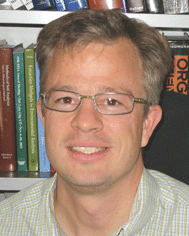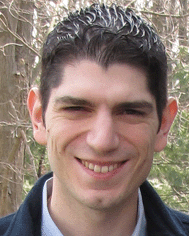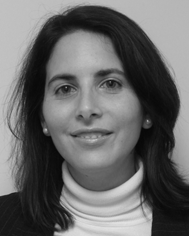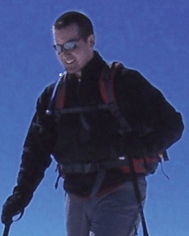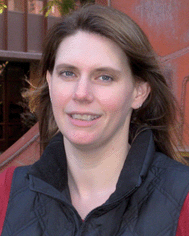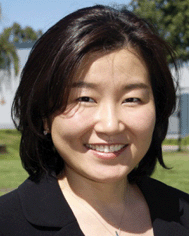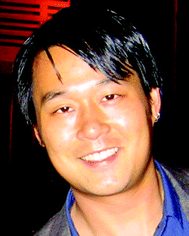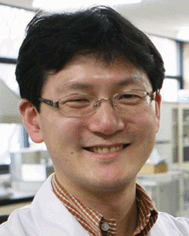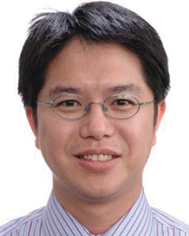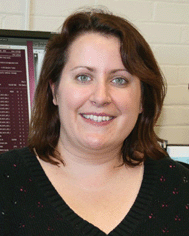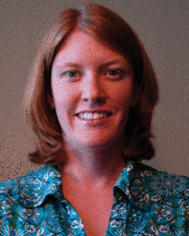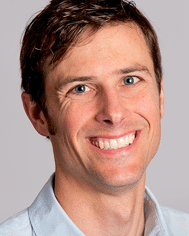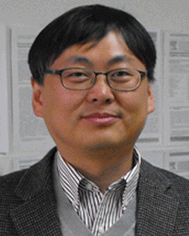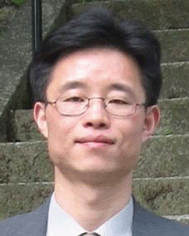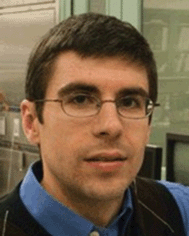Emerging investigators contributors 2012
As David and Tamar mention in their Editorial, the onus is now shifting from the early pioneers in the environmental sciences to young scientists and engineers who will now carry the torch to become the new elite in this field. Therefore, it is with great pride and pleasure that I introduce readers to these “emerging investigators” via a series of questions posed to them about environmental science and engineering and the challenges we face both now and in the future, as well as their motivation. You will see from the international nature of these investigators and the maturity of their responses to these questions, that environmental science and engineering is in good hands.The following are brief biographical details for each contributor to this themed issue and their responses to the following questions:
1. What motivated you to pursue a career in your particular field of environmental science/engineering?
2. What advice would you give to other investigators just starting out in the field of environmental science/technology?
3. In your opinion, what is the greatest future environmental challenge that will need to be addressed by environmental scientists/engineers?
4. Who in environmental science/engineering inspires you the most and why?
Thomas Borch
Thomas Borch was born in Denmark, in 1973. He received his Ph.D. in environmental soil chemistry from Montana State University, USA in 2003. Following his graduate studies, he began a postdoctoral scientist position in the soil and environmental biogeochemistry group at Stanford University. In 2006 he joined the Department of Soil and Crop Sciences at Colorado State University as a faculty member. He was promoted to associate professor in 2011. His current research interests are: fate and transport of contaminants of emerging concern, such as drugs and disinfection by-products, As, U, and heavy metals. He also studies climate change impacts on the interrelationship between iron cycling and soil organic carbon from the molecular to field scale. He uses state-of-the-art techniques, such as synchrotron radiation-based X-ray techniques and ultra-high resolution mass spectrometry, to elucidate (bio)degradation products, chemical states of trace elements, and structural states of minerals and organic matter.
1. I was motivated by the idea of being able to spend an entire career on trying to improve our fundamental understanding of mechanisms controlling the environmental fate and transport of pollutants in order to help develop new remediation strategies.
2. Develop a good professional network of people that you can collaborate with on projects and proposals. Don't be shy of asking for help or advice since it is OK not to know everything. Be persistent and never give up on proposal writing. Seek funding from multiple sources including the industry.
3. Scaling-up results from laboratory-based experiments to the field-scale remains the number one environmental challenge due to the complexity of environmental systems.
4. I am heavily inspired by numerous scientists in my field such as Scott Fendorf (Stanford University), Ruben Kretzschmar (ETH Zurich) and Andreas Kappler (University of Tubingen). These great individuals, friends and scientists inspire me because they have taught me that it's important to balance your work and home life and to always have fun with the research projects you get involved in.
Richard Carbonaro
Richard F. Carbonaro was born in Yonkers, NY (USA) in 1975. He received his Ph.D. in Environmental Engineering from Johns Hopkins University in 2004, and B.S. and M.E. degrees in Environmental Engineering from Manhattan College in 1997 and 1999. In 2004 he joined Manhattan College as an Assistant Professor. Currently he is an Associate Professor of environmental engineering at Manhattan College and a Partner in the consulting firm Mutch Associates, LLC. His current research interests are: environmental chemistry, contaminant fate and transport in natural waters, soils and sediments, metal speciation, and in situ groundwater remediation. At Manhattan College, he has managed research projects related to chromium redox transformations, water quality monitoring of urban pollutants, modelling of metals in lakes for toxicity assessments and partitioning of metals onto organic carbon. He is a licensed professional engineer in the State of New York (USA).
1. When I was an undergraduate student at Manhattan College, I had the good fortune of being taught by an excellent environmental engineering faculty. I was so inspired by their passion and knowledge of their field, that it continually drove me to want to know more.
2. Find topics to study that you are passionate about. Don't take on projects that you don't love. Don't be afraid to take risks.
3. Current estimates indicate that close to 1 billion people worldwide do not have access to clean, drinkable water. This problem crosses political, geographic, and socioeconomic boundaries. However, it is up to the engineering community to develop technologies for water purification that can be implemented cheaply, with minimal to zero power requirements, and that can be installed and maintained with a largely unskilled labour force.
4. I have had so many great mentors throughout my young career (they know who they are), and I aspire to be like them. However, I am inspired by my students. It means so much to me that I can help them fulfil their potential to become excellent environmental engineers.
Juana Maria Delgado-Saborit
Dr Delgado-Saborit is a Research Fellow at the Division of Environmental Health and Risk Management at the University of Birmingham. She is an expert in personal exposure assessment, characterisation of environmental levels of air pollutants and chemical speciation for source apportionment. Currently she is involved in several projects characterising organic aerosols and metallic nanoparticles in ambient air; searching for biomarkers of exposure to benzene at low-exposure concentrations; and using real-time sensors to characterise personal exposures. She received the 2010 Cefic Long-range Research Initiative Innovative Science Award and the 2011 HEI Walter A. Rosenblith New Investigator Award.
1. What I enjoy the most of my field of research is that I see a direct application of the research outcomes in improving people's health. Our research is aimed at identifying which pollution sources are affecting human exposures and which of them are the largest contributors to our exposures. We can characterise the chemical composition and toxicity of the exposures; and we can assess where and when these exposures occur. Last but not least, we are able to identify health outcomes associated to these exposures. All this knowledge can subsequently be used by policy makers to establish relevant measures that will protect human health, with special attention to sensitive populations.
2. My advice to the young investigators is to be passionate about your chosen field of research, as scientific work requires original thinking and lots of dedication. Also, research in our field is highly interdisciplinary, so not only you are expected to work independently as a scientist, but also as a member of a larger team: your research group. Equally important is to network among your peers and to keep up to date with the latest advances in your field of research, which will result in new research ideas and opportunities.
3. I foresee several big challenges that will need to be addressed in the near future. The first one is to understand how climate change will affect the composition and toxicity of air pollutants; how patterns of exposure to air pollution might change in the population; and what will be the associated health effects and risks of these changes. The second challenge will be to characterise changes in air quality associated with emerging technologies, namely nanotechnology or automotive technologies (e.g. use of fuel additives to enhance energy efficiency). The latest challenge will be to characterise the Exposome creating maps of all external and internal environmental exposures of an individual and understanding how those exposures relate to health. The Exposome will have potential application in individualised medicine and timely environmental health risk management.
4. My mentor is one of my sources of inspiration as a model of dedicated hard work, timely research ideas, vast scientific knowledge, and expertise internationally recognised among our peers. Other sources of my inspiration come from a number of other researchers – some of them research collaborators – whose avant-garde work inspires my research ideas for further work.
Michael Dodd
Prior to moving to beautiful Seattle, WA, in 2009, to start his current position at the University of Washington, Mike received his B.S. in Civil Engineering (2001) and his M.S. in Environmental Engineering (2003) from the Georgia Institute of Technology, and Ph.D. in Environmental Sciences from the Swiss Federal Institute of Technology in Zurich (2008). His research centres on homogeneous and heterogeneous redox chemistry in environmental systems, particularly with regard to pollutant and pathogen elimination during water and wastewater treatment. Whenever time permits, he savours an opportunity to steal away to the great outdoors by foot, bike, skis, or snowshoes.
1. I grew up in Atlanta, GA during a period of phenomenal population growth. As a consequence of the rapid (one could say uncontrolled) growth, coupled with drought and a long-running dispute with Alabama and Florida over rights to water resources in the shared Apalachicola-Chattahoochee-Flint (ACF) River Basin (the tri-state “water wars”), pressures on the region's water supply were (and continue to be) immense. In response, several area water districts were moving forward with substantial plans for indirect potable water reuse around the time I was an undergraduate student at Georgia Tech. The more I learned about this situation, the more I realized that similar scenarios were playing out across the globe. By the time I began graduate school, I had really taken to heart the increasing need for wide-scale implementation and public acceptance of water reuse. In the intervening years, my interest in this area has continued to grow; much of my research group's work in turn focuses on the optimization and advancement of (waste)water treatment technologies as a means of addressing some of the major technical challenges associated with water reuse (e.g., micropollutants, energy usage, capital costs).
2. Although interdisciplinarity and breadth of expertise are increasingly critical for success in our field, I think that it is also still incredibly important to specialize to some degree. Do your best to seek out an important niche (or two or three), and do exceptionally strong, fundamentally sound work in your area(s) of specialization. Equally importantly, stay confident in yourself, even in the face of difficult times (of which there will likely be some), and remind yourself every now and then how cool it is to have the opportunity to do work that could very directly change the world around us for the better.
3. Mitigating the ecological impacts of climate change would probably rate at the top of my list (as it likely would for almost every environmental scientist and/or engineer). Of course at the same time, we will need to address our increasingly interconnected energy and water needs (i.e., the energy-water nexus), as traditional resources for each become increasingly scarce. Clearly all of these are as much societal and political challenges as technical/engineering challenges (which is pretty frustrating at times), but I think that we can certainly do our part as scientists/engineers by continuing to work toward development of economically feasible alternative fuel/energy sources, while also doing our best to maximize the energy efficiency and sustainability of water supply and treatment strategies. I've seen some great work in all of these areas over the past decade, and have to remain optimistic that ultimately the socio-political obstacles to effectively addressing these challenges can also be overcome.
4. Far too many inspirations exist for me to name (though my graduate and postdoctoral advisors would certainly be at the top of the list). I will say that I'm extremely inspired by many of my peers. I'm often amazed at the complexity and quality of investigations being undertaken by environmental scientists and engineers of my generation.
Michelle Hladik
Michelle Hladik is an environmental organic chemist who has been working with the USGS Pesticide Fate Research Group in Sacramento since 2005. She has a B.A. in Chemistry from Vassar College (1999) and a Ph.D. in environmental engineering from Johns Hopkins University (2005). Her research focuses on the fate and transport of current-use pesticides and degradates in aqueous systems. She is interested in developing new methods to measure pesticides in water and sediment. More recently her research has expanded to disinfection by-products, especially non-regulated ones, including the transformation products of pesticides during water treatment.
1. I've always had an interest in water and this lead to water related research. My focus on pesticides was motivated by their continually changing use and potential effects this might have on the environment.
2. To explore multiple areas of research before settling down into one area and to try and find something you enjoy rather than chasing the “hot topic” of the moment.
3. The effects of multiple stressors on the environment. More and more chemicals are being introduced each year and their singular effects are usually unknown and less in known about when they co-occur with other contaminants.
Young-Shin Jun
Young-Shin Jun is an Assistant Professor of Energy, Environmental & Chemical Engineering at Washington University, where she leads the Environmental NanoChemistry Laboratory. Her research goals include elucidating physicochemical reaction mechanisms occurring during water reuse through aquifer storage, treatment, and recovery to secure underground sources for drinking water; improving our understanding of the fate and transport of contaminants and nanoparticles; and providing more environmentally sustainable CO2 sequestration strategies. Prior to her position at Washington University, she conducted postdoctoral research in nanogeoscience at the University of California at Berkeley/Lawrence Berkeley National Laboratory. She holds a Ph.D. in Environmental Chemistry from Harvard University.
1. In the environmental field, a single individual can make big contributions toward solving global challenges. In the face of unprecedented demands for clean water and energy, we simply must find ways to secure sustainable supplies of both, while respecting and restoring the environment and reducing our emission of greenhouse gases. I strongly believe that a better understanding of the environmental chemical systems that are tightly linked to physical and microbial processes will greatly aid our efforts to meet these pressing needs. My motivation is the chance to make a lifelong personal contribution to our understanding of complex, dynamic environmental interfaces.
2. Environmental systems are messy. To deconvolute such complex and dynamic matrixes, we need to look at the systems step by step. Maybe at first, it will be baby steps, and it may seem endless. However, it is important to note that we are making progress. So, please be patient, do not look for a fast and easy path, and keep alive your passion for the problems which matter the most to you and to the world.
3. In my personal opinion, maintaining a sustainable energy-water nexus is the greatest environmental challenge. Environmental scientists and engineers are uniquely positioned to undertake this grand challenge. While other experts refine the efficiencies of energy and facility operations, environmental engineers and scientists can address not only efficiency but environmental sustainability as well. Among many challenges, we can contribute to maintaining clean water resources by water reuse as well as desalination, and to developing methods for carbon capture, utilization, and sequestration. To address these problems, we must advance our fundamental understanding of physico-chemical reactions in a variety of natural and engineered aqueous systems, perform environmental impact and risk assessments of new nanomaterials and nanotechnologies, develop advanced scientific in situ tools to provide real-time information, and link different areas of expertise and scales of research.
4. Drs Werner Stumm and James J. Morgan. While working on my master's degree in South Korea, I first met their book entitled “Aquatic Chemistry: Chemical Equilibria and Rates in Natural Waters”, which most environmental engineers and scientists know. This book encompasses an amazing breadth and depth of information. After my intriguing exposure to aquatic chemistry, I wanted to pursue a career in investigating reactions at solid–water interfaces in dynamic environmental systems. Interestingly, I started my Ph.D. work on this subject in the same lab spaces at Harvard University where Drs Stumm and Morgan worked many years ago. I hope I can follow their outstanding scientific journey, extending it into the realms of nanochemistry and nanotechnology. Thanks, Drs Stumm and Morgan, for your great inspiration!
Christopher Kim
Christopher S. Kim, associate professor of earth and environmental sciences at Chapman University, received his A.B. from Princeton University and his Ph.D. from Stanford University. He conducts research with undergraduate students as head of the Environmental Geochemistry Lab (http://www.chapman.edu/envgeo) and teaches courses in geology and chemistry. Chris is the recipient of an NSF-CAREER award and a Henry Dreyfus Teacher-Scholar Award based on “accomplishment in scholarly research with undergraduates, as well as a compelling commitment to teaching”. He spent the 2010–2011 academic year as a visiting research fellow at Harvard University. Chris is also the current director of the Office of Undergraduate Research at Chapman University.
1. Growing up, I was always interested in the environment, having spent lots of time camping, hiking, and traveling to different parts of the world at a young age. In high school I became involved in a student environmental group which organized and operated the school's first recycling system (using a modified electric cart to drive around campus, which at the time was quite a perk). This laid the groundwork for even more involvement in environmental issues while in college – I co-founded a student group that authored the first full environmental audit of my university.
At that time in the early 1990's, the field of "environmental studies" was just emerging but could not yet be selected as a major at most universities. I chose to major in geology with a minor in environmental studies, as I thought it would give me the best chance to eventually develop a career doing work in environmental issues. I did undergraduate research in geochemistry and continued in that direction through college and graduate school, and now consider myself an environmental geochemist. When I explain what that is to most people, I say that I study the chemistry of geological processes that have an environmental impact. That seems to describe what I do pretty well, and I feel fortunate to have moved in a more or less steady direction towards working in environmental issues over the years.
2. Embrace the scientific interdisciplinarity that's all but mandatory now in researching and understanding complex environmental issues. This means learning about a wide range of concepts and processes outside of the more traditional scientific discipline you (likely) studied in college or grad school. Accordingly, this often means realizing/admitting you don't know certain fields very well, asking lots of questions, and supplementing your knowledge from others or on your own. On the plus side, you have more opportunities working in such a relatively new and interdisciplinary area to draw connections between different disciplines or methods that haven't been made before, and to discover some pretty cool stuff.
3. My answer may be a bit surprising, but I feel that the biggest challenge to environmental scientists and engineers is not technical; science has shown time and again the ability to innovate, create, answer unanswerable questions, and solve unsolvable problems. I think the biggest challenge is actually in the clear, objective, and convincing communication of the importance and value of environmental research to the broader public. In an increasingly polarized political climate, the future of continued exploration and resolution of environmental problems will depend on our ability as scientists to explain what it is we do and why it is important—to everyone
4. I'm greatly inspired by the senior researchers who were among the first in the field of environmental science, probing entirely new scientific areas and defining the need for support and funding to expand research in these areas. At the same time, there are many colleagues of my generation whose enthusiasm and innovative work, which I typically get updated on through conference presentations, provide me with an extra boost of motivation to publish my own (often delayed) work in manuscript form—one of the main reasons I'm participating in this special issue in the first place.
Jung-Hwan Kwon
Jung-Hwan Kwon (1974) received B.S. in Chemistry and M.S. in Urban Planning from Seoul National University in 1996 and 1998. After military duty, he worked for the Korea Institute of Toxicology as an environmental chemist (2000–2002). He obtained Ph.D. in Environmental Engineering in 2006 from the University of Texas at Austin, writing his thesis on the bioavailability of organic chemicals. After he worked for the Swiss Federal Institute of Aquatic Science and Technology (Eawag) as a postdoctoral scientist, he joined the department of Environmental Engineering at Ajou University as an assistant professor in March 2008. His current research interests include the fate and transport of contaminants in natural and engineered systems, bioavailability of hydrophobic organic chemicals, and development of passive samplers.
1. I started my higher education at Seoul National University with a chemistry major. Since chemistry is the science of matter, I was fascinated with the fact that all visible and tangible phenomena are explained by what happens at a molecular level. However, nice illustrations and graphs in textbooks were usually those obtained under well-defined conditions, although chemical principles govern complicated processes as well. In the 1990s, environmental science/engineering was one of the emerging subjects in Korea, dealing with issues in environmental contamination and related problems and engineering solutions for them. One of the environmental episodes at that time in Korea was the “disinfection of phenol”. Wastewater containing phenol was accidentally spilled into a river and during disinfection, the phenol was transformed into chlorinated phenols, which are more toxic and smell bad. More than a few million people suffered from inappropriate tap water. Many important environmental issues including this could be explained by chemical principles and I found that environmental chemistry was a perfect subject for a young student with B.S. in chemistry.
2. Environmental science/engineering is a definitely attractive area for many young scientists/engineers because we believe that research outcomes in this area contribute to the care of the Earth. Good advice for those who pursuing career in science/engineering can be found in many books. Although I do not believe that I'm at the stage of giving an advice to young investigators in the field, I could say “keep your original resolution”. You will probably find yourself at a point where you do not really know what to do next. From my limited experiences, the best way to minimize regrets is make decisions based on what you wanted to be when you first decided to choose this career path.
3. We, environmental scientists/engineers, often use model systems to explain results/outcomes expected in the field because field studies usually require much greater effort and more resources. Although we try our best to mimic real world phenomena with our miniatures in the laboratory, these trials often fail to link the two. Here's an example: a researcher who studies mantis observes that the female eats the male after mating and concludes that the mantis is cannibalistic. However, this is not very likely in the wild. In a cage, the male cannot escape from the female. In the wild, the male might escape from the female after mating, and the female may find other victims. Although the experiments are performed with care in the laboratory, the experimental design is limited to reflect “real” environmental conditions. We have to be very cautious when extrapolating laboratory to field. One of the biggest challenges that we are facing, I think, is to provide linkage between laboratory results and the fields with careful models. This includes projection of global climate changes from limited laboratory and field data, and the evaluation of human and ecological risks posed by chemical contaminants from laboratory toxicity experiments, etc.
4. I feel so lucky that I met many excellent mentors during my earlier career. If I were to pick just two of them, they would be Dr Yong-Hwa Kim, of the Korea Institute of Toxicology (retired) and Prof. Beate Escher at the University of Queensland. I met Dr Kim when I was a research scientist after graduating from my M.S. and he became my role model of a good researcher, who was always serious-minded in conducting research. He showed me the importance of unbiased attitude while conducting research. Academic discussion with him was always inspiring and I think that my research attitude was formed at that time. I worked as a postdoc with Beate for one and half years at the Swiss Federal Institute of Aquatic Science and Technology (Eawag). Her diligence and energy, not to mention her academic excellence, were amazing. I could not imagine how she could manage all those things. In spite of her busy life (I guess she still does), she was very warm-hearted and cared for all group members. Her personality and hospitality definitely affected the performance of a foreign postdoc. As a research group leader now at Ajou University, I try to resemble them in many ways, but find myself falling short.
Yi-Pin Lin
Dr Yi-Pin Lin is an Assistant Professor of the Department of Civil and Environmental Engineering at National University of Singapore. He received his Ph.D. degree from the University of North Carolina at Chapel Hill, and M.S. and B.S. degrees from National Taiwan University. Prior to joining NUS, he was a postdoctoral researcher at the University of Iowa. His passion for water quality originates from his childhood hobby of fishing. His research interests include drinking water quality in the distribution system, advanced oxidation processes and natural organic matter.
1. My motivation to pursue a career in the field of water quality and treatment originates from my childhood hobby, fishing. I witnessed the deterioration of water quality and decline of fish populations in rivers in my hometown Taipei due to pollution caused by fast economic growth. With the efforts of researchers devoted to this filed (including myself), I hope I can soon fish again in where I used to as a child.
2. Compared to other subjects, environmental science/engineering is young and multidisciplinary. Find your passion. Learn as much as you can and as broad as possible.
3. With the advancement of analytical techniques, we can now detect pollutants that could not be detected in the past. Their adverse impacts on ecosystem and human health can also be better characterized. In my opinion, how to turn good science into good and timely policy to prevent further environmental deterioration would be the greatest future challenge.
4. In fact, there are two who inspire me the most: Dr Phil Singer and Dr Bill Glaze. Dr Singer was my Ph.D. advisor at UNC-Chapel Hill. His work in disinfection by-products has great influence in drinking water industry around the world. He is always available and willing to help, not only for his students but also anybody who needs him. I took Dr Glaze's very last course “Environmental Redox Processes” at UNC before he retired. Can you image that he gave each student different final exam questions depending on his/her particular interests in the class? He is tireless both in teaching and research. Part of my current research in ozonation still relies on what I learnt from him 11 years ago.
Sara Mason
Sara E. Mason was born in the USA in 1979. She received her Ph.D. in Chemistry in 2007, working with Prof. Andrew M. Rappe at the University of Pennsylvania (USA). Prior to this, she completed an A.A.S. in Chemical Technology from Monroe Community College (1999) and a B.S. in Chemistry, summa cum laude, from St. John Fisher College, (2001) both in her hometown of Rochester, New York. From 2007-2010 she worked as a postdoc at the National Institute of Standards and Technology in Gaithersburg, Maryland (USA), funded by a National Research Council research associates fellowship and under the advisement of Dr. Anne M. Chaka. Since 2010, she has been an Assistant Professor in the Department of Chemistry at the University of Iowa (USA). Her research group employs a first-principles modeling approach based on well-defined comparative studies of complex and heterogeneous geochemical systems, working to develop the molecular-level understanding of environmental interface reactivity.
1. I often explain to people that I consider myself to be an "accidental" environmental scientist. What I mean by that is that it wasn't until after completing my Ph.D. that I learned how my skills in theoretical surface science might translate to research problems involving environmental interfaces. As a postdoc, I was extremely lucky to join an existing collaboration between theoretical and experimentalist experts working towards elucidating the structure–property relationships of hydrated mineral surfaces. My postdoc mentor and collaborators, all of whom are incredibly supportive of me, encouraged me to further and expand my endeavors into quantum geochemistry for my independent career. I enjoy strategizing how to surmount the challenging departures of environmental interfaces from traditional surface science, as well as the opportunity to develop my expertise in a multidisciplinary, society-relevant, and timely research field.
2. The multi-faceted nature of environmental science requires collaborative efforts and clearly-defined research strategies. As a practitioner of theoretical modeling methods, I find it particularly important to work closely with experimentalists to ensure that we are attempting to answer the questions of greatest importance and interest to the research community. I also believe that synergy can be maximized by identifying research successes from related fields and working to adapt those approaches to outstanding problems in environmental science. Once you realize how inter-related science really is, you open doors to new possibilities and new approaches.
3. I would not presume to speak on behalf of the entire field of environmental science, but as a theoretical surface scientist I see the need to bridge computational methods spanning different length- and time-scales as a grand challenge. It is widely recognized that no single modeling method is capable of addressing the full range of research questions that scientists have about environmental interface reactivity. However, effectively turning the output of a small scale simulation into the input of another, larger simulation must be addressed so that we can truly build a more comprehensive understanding of how environmental reactivity is affected by different length scales and real-world variables such as pH, ionic strength, complexing ligands, etc.
4. I have the fortunate problem of having too many exceptional mentors and personal "science heroes" to list. I will always look to my Ph.D. advisor, Prof. Andrew M. Rappe, for inspiration. His research program has continuously evolved to address research needs in numerous areas, and now includes emphasis on sustainable energy, efficient use of current energy sources, and energy conversion to different forms. I had the immense privilege to meet Prof. Gordon E. Brown, Jr. early in my foray into environmental science. The wisdom of his reductionist approach to delineating environmental interface reactivity is something that I attempt to emulate in forming my modeling studies. In my own department at the University of Iowa, Prof. Vicki H. Grassian's research has succeeded in the experimental arena where I hope to take theory and modeling: Transforming traditional surface science to environmental interface science. My postdoc mentor Dr. Anne M. Chaka, and ongoing collaborator Prof. Thomas P. Trainor, have both inspired me to take on an ever wider range of research questions and have been beyond generous and supportive of my nascent independent career. Finally, for each of the group leaders listed, I also thank the many associated graduate students and postdoctoral researchers who are part of the future of environmental science. Referencing a quote attributed to Isaac Newton, "If I have seen a little further it is by standing on the shoulders of giants." I thank the many giants who have given me a boost, listed here or otherwise, and I promise to do all that I can to offer the same to my students.
Jennifer Murphy
Jennifer Murphy is an Assistant Professor (since 2007) in the Department of Chemistry at the University of Toronto, where she holds a Canada Research Chair in Atmospheric and Environmental Chemistry. Her research program is focused on environmental processes that influence atmospheric chemistry and biogeochemistry, with an emphasis on field measurements. During her postdoctoral fellowship at the University of East Anglia (2005–2006), she made measurements of volatile organic compounds onboard the BAe-146 research aircraft. As a Ph.D. student at UC Berkeley (2000–2005), she studied the role of nitrogen oxides in photochemical ozone formation.
1. I get excited about trying to understand how the natural world works. Atmospheric chemistry is a way for me to apply my background in chemistry to scientific problems, like air pollution and climate change, that matter to society. I love spending time outdoors, so doing fieldwork is a great fit for me. I also like working collaboratively, sharing ideas and learning from others. Because the earth system is so complex, collaboration can be key to really understanding a scientific problem.
2. Above all, find a topic that you get excited about and enjoy the big picture as well as the day-to-day details of working on. Being pragmatic, it’s also useful to be aware of the types of environmental problems society is grappling with and position yourself to be able to contribute in those areas.
3. In my opinion, it all comes down to sustainability. A growing global population with a desire for higher standards of living is going to stress all aspects of the environment. While most environmental scientists and engineers do not focus on population growth directly, many of the problems we deal with are the result of the intensity of resource extraction and consumption and waste production that result from the strain of supporting Earth’s human population.
4. I admire Mario Molina for his work in discovering the role CFCs play in ozone destruction and for being an advocate for scientific understanding among policy-makers and the public.
Jeff Nason
Jeff Nason was born in the United States in 1975. He received his Ph.D. in Civil Engineering from the University of Texas at Austin, USA in 2006. He also holds a B.S. in Chemical Engineering and an M.S. in Environmental Engineering from Cornell University. Since 2007 he has been an Assistant Professor of Environmental Engineering in the School of Chemical, Biological, and Environmental Engineering at Oregon State University, USA. His current research interests include physico-chemical treatment processes, particle removal processes for drinking water treatment, and the environmental fate, transport and transformations of engineered nanomaterials in aquatic systems.
1. Initially, my goal in pursuing a career in environmental engineering was motivated by my desire to put my degree in chemical engineering to use solving problems that would protect the environment. The process engineering nature of water and wastewater was appealing to me. Upon entering the field as a junior engineer, I realized how much I didn't know about how water and wastewater treatment processes worked. After working for a few years, I headed back to graduate school to gain a firmer ground in treatment process engineering, but discovered a passion for academic research and teaching that motivated my current career.
2. I would suggest that other young investigators follow their passion, choosing environmental problems or research projects that excite them. You will produce your best work and be most creative when working on problems you are passionate about. Secondly, I'd suggest that they take advantage of any opportunity they can to learn new skills and seek out opportunities to interface with others in different disciplines. The problems we are tackling today are inherently multidisciplinary and require multiple perspectives and myriad of tools to solve.
3. In general, I believe our greatest challenge as a society is the development of sustainable approaches to our use of natural resources. Our role as environmental scientists and engineers is to provide sound scientific evidence in support of these efforts, be it wastewater reuse or development of alternative energy sources in the developed world or providing sustainable solutions for water and sanitation in the developing world. A key challenge is effectively communicating the science to the public and policy makers.
4. My Ph.D. advisor, Dr Desmond Lawler, has been an inspiration since the day I first met him and continues to be to this day. His balanced excellence as a leading scientist/engineer, teacher, and mentor to the next generation of engineers is a great source of motivation. I often find myself striving to emulate the ideals he has espoused during his career. I am also inspired by my students, whose curiosity and desire to make a difference brings out the best in me as a researcher, teacher and mentor.
Hee-Deung Park
Hee-Deung Park is an Associate Professor at the School of Civil, Environmental and Architectural Engineering at Korea University, Seoul, South Korea. He received his Ph.D. in Environmental Engineering from the University of Wisconsin, Madison, USA, and M.S. and B.S. in Biology from Korea University, Seoul, Korea. Prior to joining the faculty at Korea University, he worked at Kolon Engineering and Construction, South Korea, and conducted post-doctoral research at Stanford University, USA. His main research interest involves identifying microbial community compositions in environmental engineering settings such as activated sludge reactors, anaerobic digesters, and membrane filters, and exploring the correlations between community information and the function of environmental engineering systems. He uses modern culture-independent molecular biological tools for a rapid, precise, unbiased, and high-throughput examination of environmental samples. The final goal of his research is to provide microbiological information critical to the optimal design and operation of environmental engineering systems.
1. Knowledge of the power of microorganisms relevant to wastewater treatment during my graduate studies fascinated me to pursue my career in microbial ecology in environmental engineering setting.
2. Collaborate with other researchers who have different disciplines to solve environmental problems. Acknowledge that they are able to provide idea that you have not thought about.
3. Although emerging contaminants are increasing in numbers, we don't know very well about their effects on mankind. Environmental scientist and engineers need to assess their risk on human health as well as monitoring their concentrations in environment.
4. My doctoral advisor, Daniel Noguera, inspired me the most to pursue my career in academia. He enlightened me to know about the delight as a scholar by educating students, conducting research, and serving society.
Zhimin Qiang
Zhimin Qiang is a professor and vice director at the State Key Laboratory of Environmental Aquatic Chemistry, Research Center for Eco-Environmental Sciences, Chinese Academy of Sciences, Beijing. He received his B.S. (1994) and M.S. (1997) from Tongji University in Shanghai and Ph.D. (2002) from the University of Delaware in USA. Thereafter, he worked for about five years at the Missouri University of Science and Technology from postdoctor to research associate professor. In 2006, he was introduced into the Chinese Academy of Sciences as an overseas outstanding scholar. He currently leads a research team with focus on emerging contaminants and advanced oxidation processes.
1. My major field is the fate, effects and control of emerging contaminants in natural and engineered systems. After defending my Ph.D. dissertation at the University of Delaware in 2001, I started to work at the Missouri University of Science and Technology on a research project sponsored by US EPA, Environmental Technologies for Concentrated Animal Feed Operations. It was the first time that I got to know antibiotics – one typical class of emerging contaminants which pose a severe threat to human health and ecological security even at trace concentration levels. Since I joined the Chinese Academy of Sciences in 2006, I have extended my list of emerging contaminants to endocrine disrupting chemicals, pesticide degrades, and disinfection byproducts.
2. Some young environmental investigators like to start their own academic career from their doctoral research topic and stick to this area for quite a few years. I would suggest they try several related areas within the first few years, and then select two or three most suitable ones to focus on for future long-term development. Multidisciplinary studies usually lead to core competence for funding application and high-quality publications.
3. As environmental problems caused by conventional pollutants (e.g., COD, N, and P) are being understood and resolved, the long-term and combinational effects of emerging contaminants in the environment on public health and ecosystems appear to be the greatest future environmental challenge. Based on the precaution principle of scientific research, environmental scientists need to understand the behavior, fate and effects of emerging contaminants in natural and engineered systems, and environmental scientists need to develop feasible control and treatment technologies to minimize their release into our environment.
4. My interests in environmental research were most inspired by my Ph.D. advisor, Dr Chin-Pao Huang, the Donald C. Phillips Professor at the University of Delaware. During my M.S. study at Tongji University in the mid nineties, graduate students had little chance to operate state-of-the-art instruments and to communicate with international pioneers. Dr Huang brought me into his research team in early 1997, which gave me a great opportunity to learn modern and diversified divisions of environmental science and technology. My horizons were largely expanded during my Ph.D. study. In 2005, Dr Huang advised me to start a new career in the Chinese Academy of Sciences. I came back in the summer of 2006 to establish my own research team, which now consists of 3 faculty members and 15 graduate students with advanced analytical instruments. Dr Huang's words “nothing is impossible” always encourage me to go forward along the uneven road of scientific research.
Christopher Szakal
Dr Christopher Szakal has been a Research Chemist at the U.S. National Institute of Standards and Technology (NIST) since 2006. Prior to his arrival at NIST, he received his B.S. in Chemistry from Muhlenberg College, Allentown, PA (2001), and his Ph.D. from the Pennsylvania State University (2006). Szakal’s research employs desorption mass spectrometry techniques, such as SIMS and DESI, for developing measurement methods to study the surface chemistry of nanomaterials and biological cells. He has published more than two dozen papers in a variety of analytical chemistry, physical chemistry, and surface analysis journals.
1. At NIST, we are interested in solving difficult measurement problems with broad public benefits, especially ones that don’t have clear paths towards suitable answers. As a surface chemist, I see first-hand the subtle effects that can be imposed into a wide range of systems by even the smallest differences in surface chemistry. As someone who is interested in studying the interactions of nanoscale materials with environmental systems, (and knowledgeable about the increased roles of surfaces in nanoscale reactivity), I wanted to try to use my expertise to develop measurements that could help provide insight on these issues.
2. Always continue to ask questions like “why”, “how”, and “what about…” Environmental systems are extremely complex portions of our ecosystem and require careful attention to account for as many variables as possible. Do not be discouraged if there is no current method to detect/solve/understand your system/question at hand. Creativity in such a situation provides enhanced opportunity.
3. Proactively thinking about tomorrow’s issues, contaminations, exposure limits, etc. before they become a problem or threat to environmental systems.
4. Chemical engineer R. David Holbrook at NIST. He never stops asking the difficult questions or searching for the correct collaborator. His focus is always oriented towards finding the right people and utilizing the right technology to tackle each issue. Rather than taking the quickest or easiest path, he takes the time to study relevant environmental issues carefully so that he really understands each problem before deciding which approach is best.
| This journal is © The Royal Society of Chemistry 2012 |

